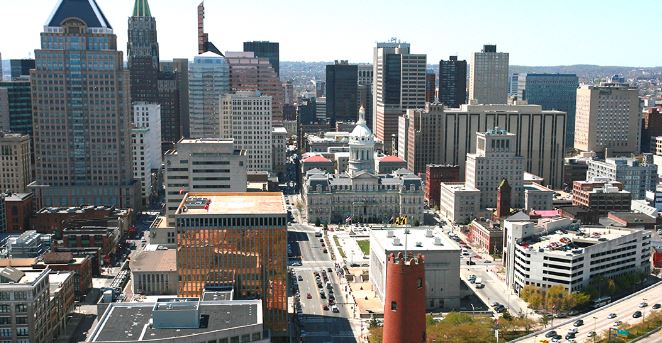[ad_1]
By Saafir Rabb and Vicente Lopez Ibor Mayor
For too long, Baltimore has suffered from chronic levels of mismanagement and corruption, driving unemployment, economic stagnation, poverty and crime. But the recent drive to transition toward clean energy opens up an unprecedented opportunity to rebuild the city’s infrastructure.
It’s time to roll up our sleeves and develop an entirely new paradigm of politics, economics and energy that will generate new jobs and dividends for grassroots communities while making Baltimore a go-to hub for foreign investment.
Instead of a situation where crony capitalism uses citizens’ taxes to feed the massive concentration of wealth and power in the hands of a few, the clean energy transition heralds the opposite: giving power back to the people. Literally.

Earlier last year, Maryland lawmakers mandated the groundbreaking target for 50 percent of all energy production to become renewable by 2030. And by end of 2019, Republican Governor Larry Hogan announced a state plan for 100 percent clean energy by 2040, to be be submitted to the Democrat-controlled legislature.
If Baltimore follows through with these ambitions, the results could be revolutionary. Renewable energy is one of the world economy’s largest growth sectors, set to expand by 50 percent over the next five years.
One of its biggest drivers has been foreign direct investment. Some of the world’s largest pools of capital, including institutional investors managing more than $17 trillion in assets, now see climate change as an investment priority, and 60 percent of the Fortune 100 companies around the world have committed to increasing renewable energy use in their operations.
This means that Baltimore’s clean energy drive could make it an attractive magnet for foreign investment, with transformative implications for residents. Most energy generation is centralized, top-down, high cost and generates considerable waste. Renewable energy offers the exact opposite: decentralized and horizontally distributed energy generation, enabling energy consumers and producers to be one and the same.
This is an opportunity to return to, if not surpass, Baltimore’s ‘boom town’ phase in the roaring twenties, when every year saw a rise in new commerce, industry and jobs. That’s why it’s critical to recognize that Baltimore’s ‘Green New Deal’ is not just about energy, but about regenerating a new public infrastructure where households, communities, hospitals, schools, small businesses and beyond are owners and producers of energy.
This post-carbon industrial transition promises to revitalize the local economy with influxes of foreign capital in partnership with local and national investors. As the new infrastructure is rolled out across all sectors, we will need new training and education to cater for the hundreds and thousands of new jobs and skills opened up. Our young people will see the emergence of not just new jobs, but whole new landscapes for technology innovation and entrepreneurship.
But to make this vision a success, the plan has to be right. According to Washington D.C.’s Center for Climate Strategies, the weaknesses of the Hogan plan outweigh its laudable strengths – meaning that it won’t meet the 2030 goal, let alone wider 2050 climate stabilization targets.
A truly successful renewable energy transition must create sound market incentives to bring in sought-after global investment.
We need feed-in tariffs, tax incentives, carbon pricing and emissions trading schemes. We also need joined-up thinking to integrate cutting edge technological innovations in digitalization, Big Data, AI and smart grids, combined through the emerging ‘Internet of Things’ to help speed the transition.
Yet none of this can be achieved without establishing a proper legislative and regulatory environment conducive to the rapid growth of the renewable energy industry. We also need to make sure investments work for people on the ground in some of our most deprived communities.
So we’re not quite there yet. But with the right approach, Baltimore can become much more than a climate-leader. Our city could become a global hub of a clean industrial revolution underpinning the social transformations residents desperately need.
Saafir Rabb is a Democratic candidate running for Congress in Maryland’s 7th District, and a board member with the Coalition for Black Excellence and Words Beats and Life.
Vicente Lopez Ibor Mayor, an internationally renowned environment and energy expert, is the co-founder of Lightsource BP, Europe’s largest solar energy company and Chairman of the Lightsource Foundation.
[ad_2]
Source link
